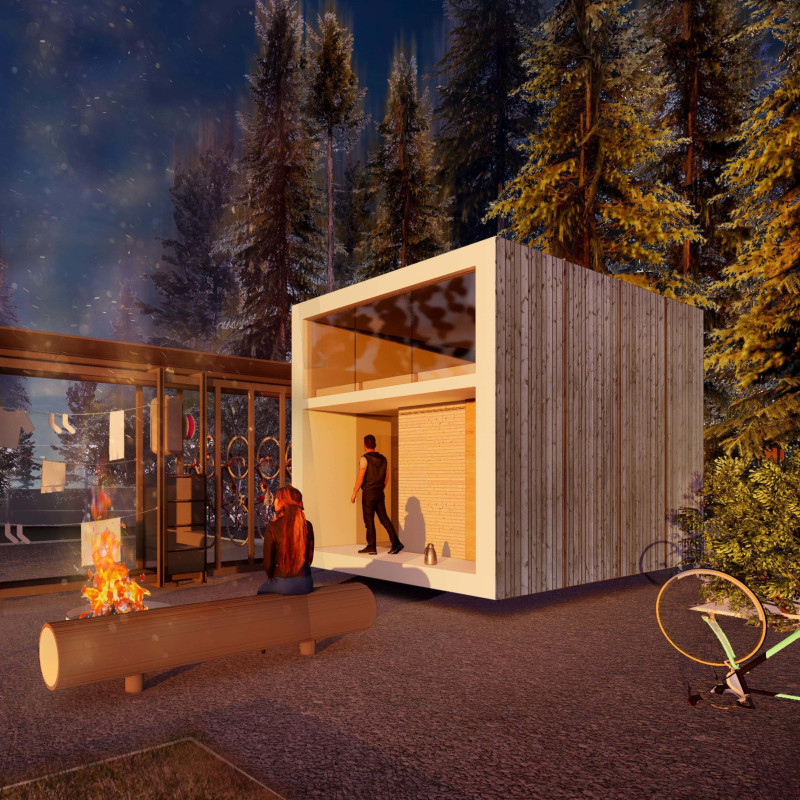5 key facts about this project
The architecture of the project is characterized by a flowing, organic form that reflects the contours of the surrounding topography. This design choice allows the structure to appear as if it is an extension of the natural landscape rather than an imposition upon it. The structure is multi-layered, creating a dynamic interaction of spaces that invites exploration and encourages users to engage with both the interior and exterior environments. Large expanses of glazing permeate the facade, allowing abundant natural light to enter while offering sweeping views of the natural surroundings. This emphasis on transparency and openness underscores the project's dedication to creating a sense of continuity between inside and outside.
Materials play a significant role in the architectural narrative, with a deliberate choice of sustainable resources that not only contribute to the aesthetic but also align with environmental considerations. Laminated timber is employed extensively throughout the structure, providing warmth and a sense of connection to nature. The use of low-emissivity glass enhances energy efficiency and ensures that the spaces remain bright and inviting. The structural integrity is reinforced by the inclusion of reinforced concrete, which is utilized in foundational components, while natural stone or slate cladding adds a tactile quality that enhances the connection to the earth.
Internally, the design promotes fluidity and a sense of belonging. Spaces are arranged in an open concept that facilitates movement and interaction among occupants. Natural finishes echo the materials used in the facade, creating a cohesive design language that resonates throughout the project. The strategic placement of communal areas encourages social interaction, while private spaces are thoughtfully integrated to ensure a balance of privacy and community.
Landscaping plays an equally important role in the overall design. Native plant species are incorporated into the surrounding gardens, providing ecological benefits while minimizing water requirements. Outdoor terraces and green roofs are designed to offer additional recreational areas that foster a connection with nature. These spaces not only enhance the aesthetic appeal of the project but also contribute to biodiversity, acting as habitats for local wildlife.
What sets this project apart is its holistic approach to design, where every element is considered in relation to its surroundings. The architecture goes beyond mere function; it encapsulates a philosophy that values sustainability while enhancing social connectivity. The unique design approaches adopted throughout the project, from the material choices to the integration of green spaces, reflect a modern understanding of what responsible architecture should aspire to achieve.
For those interested in a deeper understanding of the architectural concepts and design intentions, exploring the architectural plans, sections, and intricate design details presented in the project documentation will provide valuable insights. These aspects highlight the thoughtful strategies employed in the development of this architectural endeavor and illustrate how it seeks to redefine the relationship between built environments and the natural world.






















